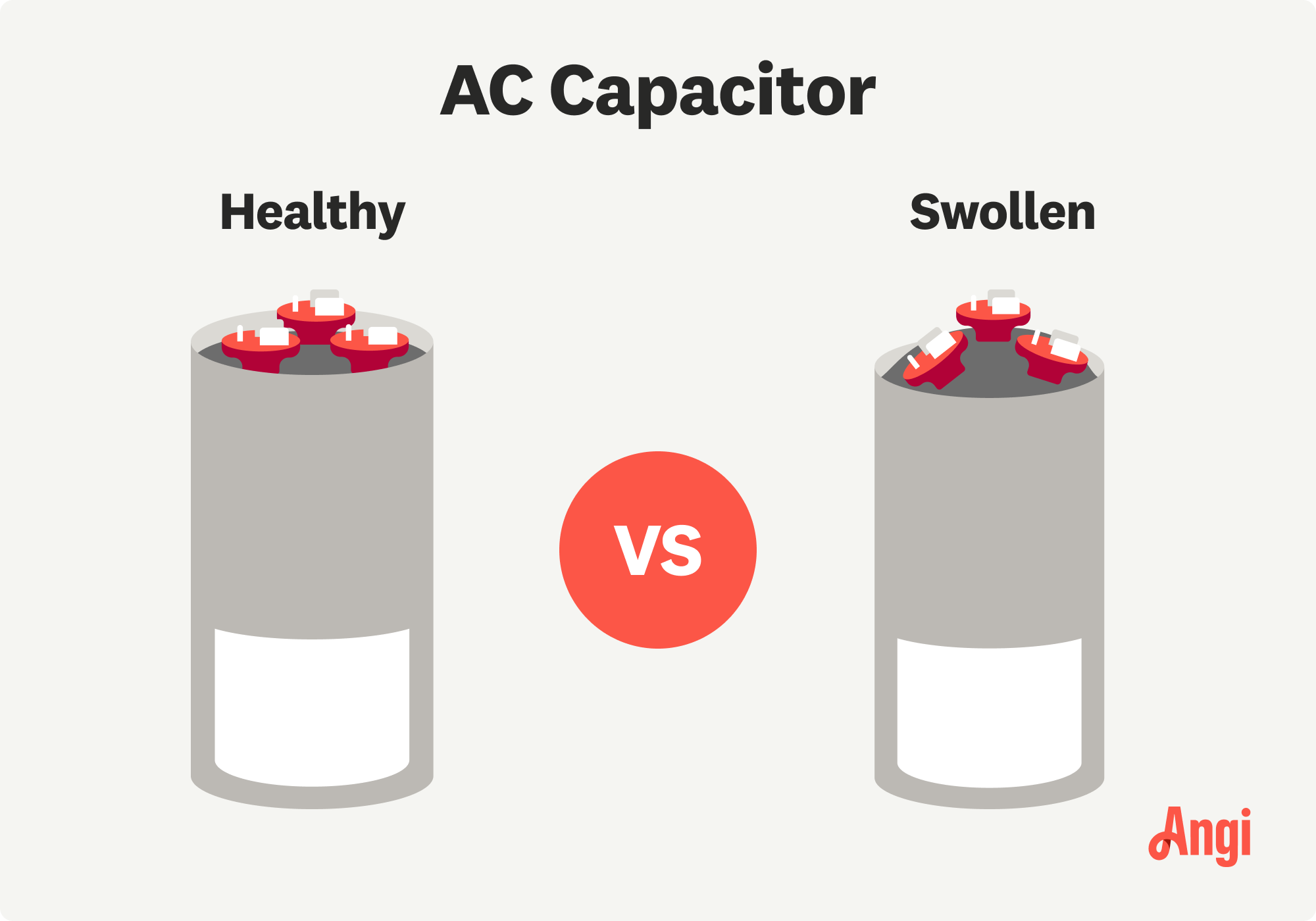
Gas furnace replacement costs depend on the type of furnace you want and installation fees. Our guide explains all the factors involved in a new furnace cost.
Keep your cool while you troubleshoot


A tripped circuit breaker is a common culprit and requires a reset.
Because many AC systems have built-in surge protection, wait 30 minutes after resetting your circuit breaker to power on your AC again.
In some cases, certain parts of an AC unit, like a compressor or capacitor, can blow from a power surge.
Contact an HVAC pro after basic troubleshooting to fix any permanent issues.
Whether a power outage lasts seconds or hours, it can cause your air conditioner to stop working, but don't worry. It's likely only temporary. When you find your AC not working after a power outage, it’s often due to a tripped circuit breaker or the unit’s built-in surge protection. But in some cases, AC units can be damaged after a power outage. Check out these common reasons your AC is not working after a power outage and what to do in each situation.
When taking on this project, expect questions only a pro can answer. With our network of local pros, you'll get the job done and your questions answered—without the hassle and stress of doing it yourself.

Some types of air conditioners have built-in protection against power surges and power outages. In most cases, there’s a 30-minute reset timeframe that prevents the condenser from power cycling, which can damage your AC unit. By waiting out the reset time, you allow your AC unit to work normally again.
Turn off the air conditioner from your thermostat.
Go to your electrical panel and locate the circuit breakers for your AC units. There are two: one for your outdoor unit and one for your indoor unit.
Flip the switches to the “off" position on the breaker panel and then switch them back to the "on" position.
Wait 30 minutes before starting your AC again. The 30-minute buffer gives the system time to reset fully.
Turn the AC back on from the thermostat.
Wait 10 minutes to see if the AC starts working again and is blowing cool air.

The indoor and outdoor units of your cooling system are on individual circuit breakers. When a power surge happens, such as right before an outage, the breakers trip to cut power to the circuit. Sometimes, one breaker or both have tripped.
If the breaker to the outdoor unit trips but the indoor one doesn't, the indoor unit will blow air through the ducts, but it won’t be cool air. If both breakers trip, the AC won’t turn on at all.
Go to your electrical panel.
Identify the circuit breakers that power your cooling system components.
If the circuit breakers marked condenser, indoor AC, or outdoor AC are off, reset them by moving the breaker to the “on” position.
If the breaker trips again immediately, do not reset it. Hire an HVAC pro to fix the problem.

An AC compressor can fail after a power surge. When this happens, there is no heat exchange, and no cold air comes through. The compressor is not circulating refrigerant to extract the warm air.
If you have a failed compressor, you’re likely to experience airflow issues, warm air blowing through your ducts, and loud noises in your HVAC system.
Contact a local HVAC technician if you notice these symptoms. A trained professional should repair or replace an AC compressor.

The AC capacitor starts up the unit's compressor. Power outage surges can cause the capacitor to blow. After power comes back, the capacitor won't work. This means that the outdoor unit won't perform a heat exchange even though the indoor unit is working. Again, the AC will blow air, but it won’t be cool air.
Go to your outdoor AC unit.
Check to see if the capacitor is blown. The capacitor looks like a canister on top of the compressor. If the capacitor blows, the top bulges or leaks oil.
Contact an HVAC technician. A trained professional should replace an AC capacitor.
If you’ve tried figuring out why your AC is not working after a power outage and you can’t determine the issue, contact a local HVAC repair technician who can diagnose and fix the issue. The cost of AC repair falls between $450 and $2,000, depending on what component breaks. An HVAC service call is $100 to $250. A trusted pro can help you get your house cool again in no time.
From average costs to expert advice, get all the answers you need to get your job done.

Gas furnace replacement costs depend on the type of furnace you want and installation fees. Our guide explains all the factors involved in a new furnace cost.

Switching from oil to gas heating could impact your savings. This guide will help you understand the cost to convert from an oil furnace to a gas furnace.

Getting AC and furnace replacement done at the same time can lead to huge benefits for your wallet and your home. Here’s everything you need to know.

A problem with your heat pump can lead to a house that’s too cold or too hot. Learn the most common heat pump problems—including any weird noises—and their solutions.

Who do you call to fix a boiler? This easy guide will help you hire the right pro for the job of fixing your boiler.

Take several factors into consideration when upgrading your HVAC system. Our guide will help you choose the right HVAC upgrade.